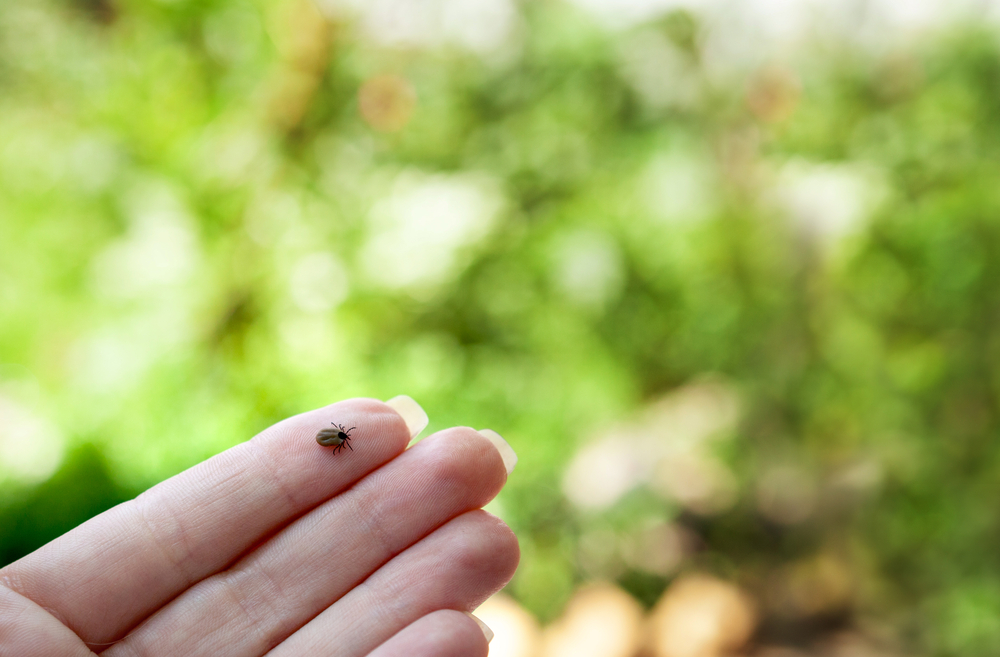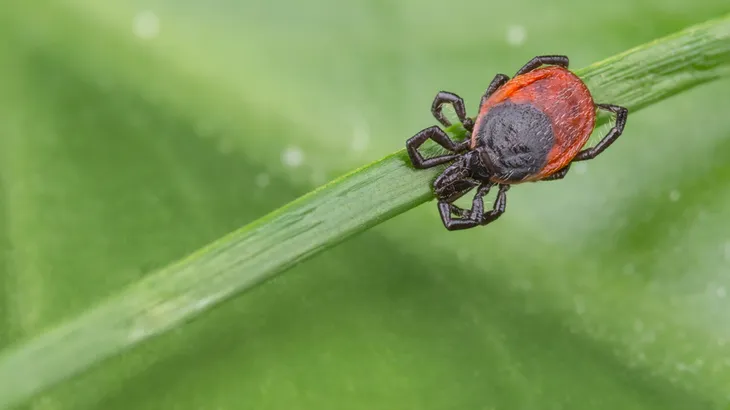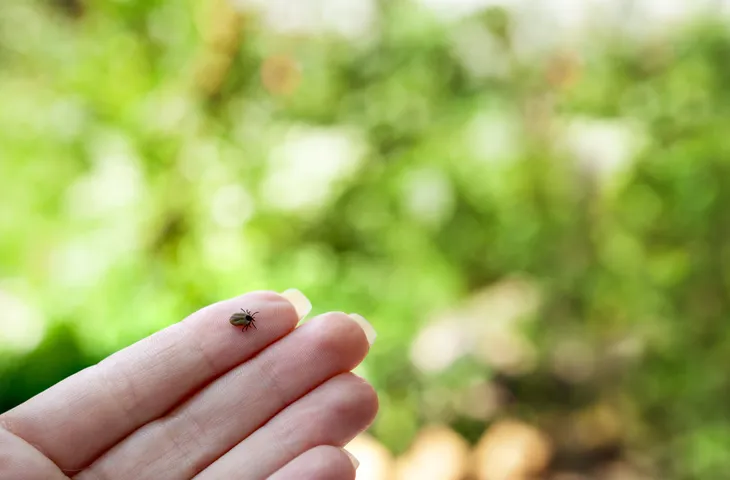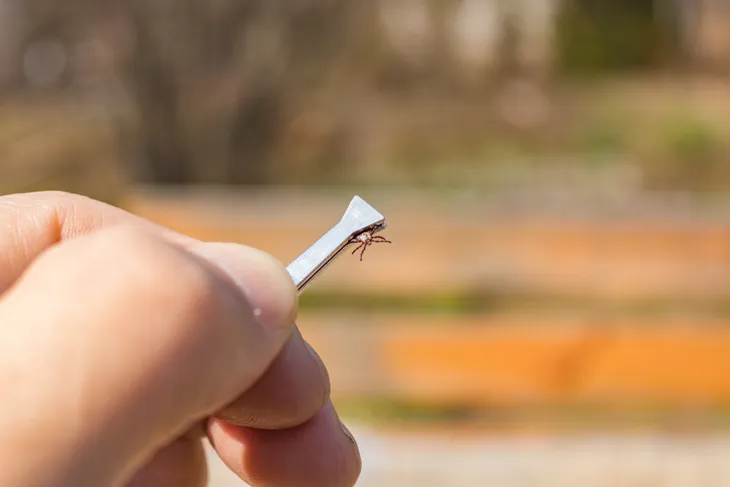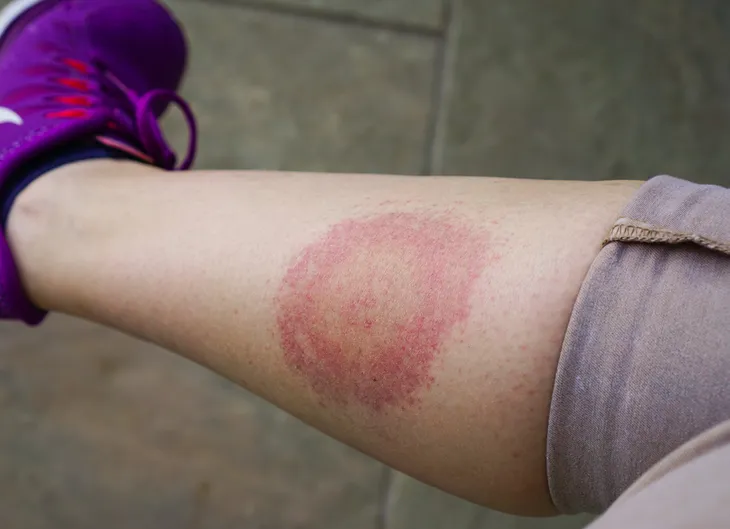I love to hike in the woods and sand dunes near my cottage, which is near Lake Huron. The trouble is that the woods and grasses in these areas are wrought with perennial reed grasses, such as Phragmites, which can provide shelter for high populations of black-legged deer ticks (or Ixodes scapularis), the type of tick that transmits Lyme disease.
Of course, after a walk in the woods, I make a point of doing a full body check to ensure I’m not carrying home one of these unwelcome visitors. I’ve never found one on my person, but the question remains, what should I do if I ever find a tick on my body?
1. Ticks and the Risk of Lyme Disease Transmission
According to Dr. Thomas Mather, director of the University of Rhode Island’s TickEncounter Resource Center, finding a tick any time of year is scary, because you don’t know what the insect is carrying. Dr. Mather explains that we should be wary of ticks during all seasons. Freezing temperatures don’t deter the transmission of Lyme disease through deer ticks. Keep in mind that approximately 50-percent of adult female ticks can be carrying Lyme disease.
Sure, they may be slower moving in winter temperatures, but once the snow melts, they become mobile again in a matter of days. Dr. Anne Bass, a physician who specializes in the treatment of rheumatoid arthritis, vasculitis, Lyme disease, systemic lupus erythematosus, and inflammatory eye disease at New York City’s Hospital for Special Surgery, also warns that ticks in the nymph stage (spring) can be as small as a poppyseed, thus easy to miss in a full body check. However, researchers from the University of Rhode Island estimate that roughly 20-percent of tick nymphs are infected with Lyme disease.
2. Stay Calm and Be Swift
Dr. Mather explains that, if you find a tick, timing is important, but it’s also imperative that you don’t panic. For instance, the longer a tick stays attached to your body, the higher the chances it can pass on the Lyme disease bacteria IF it’s infected.
Remember, an infected tick must be latched onto your person for at least 24-hours to transmit the bacteria that causes Lyme disease. So, if you find a tick, remain calm and remove the insect as soon as possible to lower the risk of infection by following these steps…
3. Before Removal, Disinfect the Area
Dr. Mather recommends disinfecting the area on your body where the tick has attached itself with rubbing alcohol, first and foremost. That means, forgo any DIY or old time remedies, such as burning the latch site with a match or covering it in nail polish to loosen the bite. Ticks latch on firmly using a cement-like secretion and only detach (using a dissolving secretion) once they’ve had their fill of blood.
Dr. Mather explains that ticks latch onto the body with a hypostome, which is a straw-like structure near the insect’s mouth. The last thing you want to do is split or damage this hypostome. If you do, germs can enter your skin via the split in the tick’s mouth.
4. Get Out the Tweezers
After you’ve thoroughly disinfected the attachment area with rubbing alcohol, keep it close by. Next, you’ll need a pair of clean, fine, pointed tweezers to carefully remove the insect. Remember, you’ll want tweezers that allow a really firm hold as adult ticks are small, but tick nymphs can be tiny as a poppy seed.
Firmly grasping your tweezers, you want to remove the attached insect as near to it’s head and mouth as you can without breaking or splitting the tick in two. So grab it using the point of the tweezers perpendicular to the insect’s body and pull up with a steady hand, without twisting the tweezers. Follow the tick removal by applying more disinfecting rubbing alcohol to the bite area.
5. Bag the Body
Keeping the tick is a vital step to the identification process. So resist the urge to kill it and throw it out. Instead, place the insect’s body in a plastic bag (where it will die quickly). Dr. Mather also recommends taking a photo of the insect in the bag against a white background. You’ll take both the bagged tick and picture to your doctor for diagnosis.
From there, your doctor will be able to identify the tick species and, if you should develop Lyme disease symptoms, recommend swift and proper treatment options. Along with the tick’s picture, you should record the location where you were bit. You can submit all of this information to TickEncounter.org’s TickSpotters for proper ID.
6. Watch for Signs of Lyme Disease
After being bitten by a tick, it’s common for people to panic. If they start to show signs of Lyme disease (i.e., the telltale bull’s eye rash or fever) the panic can reach full-blown hysteria. Remember, if you find or even if you’re bitten by a tick it doesn’t mean you’ll become sick or even develop Lyme disease.
According to research from the Centers for Disease Control, early diagnosis and treatment with antibiotics is the best case scenario for a variety of tick-transmitted diseases. However, if you do develop a rash at the bite site, headache, vomiting, muscle soreness, and fever within a few days to a month after getting bit, visit your doctor immediately.
